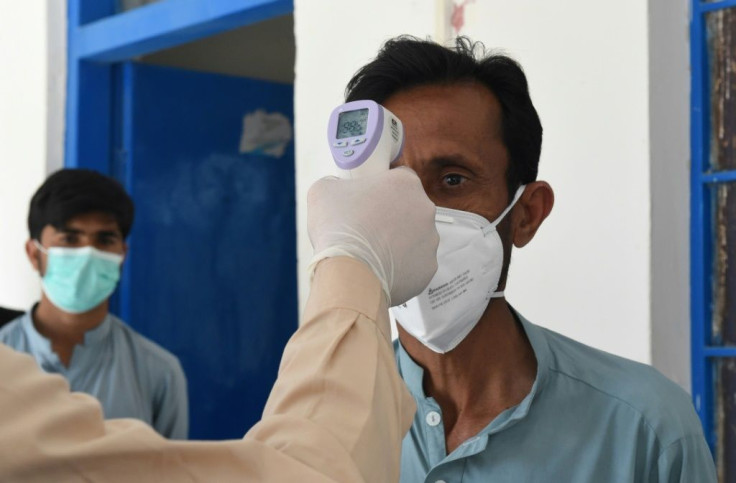Is Coronavirus COVID-19 The Real Disease X? WHO Says It's Possible

KEY POINTS
- Conspiracy theories claim COVID-19 is the dreaded Disease X that might end human life on earth
- WHO emergency committee member confirms COVID-19 “fits the Disease X category"
- The coronavirus outbreak has infected 81,000 people across the globe, killing 2,762
For the past month, some of tabloids have been screaming the COVID-19 outbreak now threatening to be a pandemic is the horrific and apocalyptic "Disease X" signaling the end times. WHO now confirms the novel coronavirus "fits" the category of this unknown illness.
The prophecy is the global catastrophe that is Disease X will wreak suffering on a scale not seen since the deadly 1918 influenza pandemic, more commonly known as the Spanish flu. This pandemic caused by the H1N1 influenza virus sickened 500 million people worldwide (27% of the world's population of 1.9 billion) and might have killed up to 100 million people.
In reality, Disease X is not the official name for an end of the world disease. Disease X is a placeholder name adopted by the World Health Organization (WHO) for any new unknown pathogen that might cause a global epidemic.
WHO said the purpose of the placeholder is to acknowledge the potential for a new epidemic caused by an unknown pathogen for which there isn't any treatment or vaccine, and to prepare in advance for a response. It established the term as a concept. The term doesn't refer to any one specific disease.
Astonishingly, WHO's announcement of the term in February 2018 sparked a media frenzy and speculation as to which disease might be Disease X. To conspiracy theorists, the answer is clearly obvious: Disease X is COVID-19.
Marion Koopmans, a member of WHO’s emergency committee and head of viroscience at Erasmus University Medical Center in Rotterdam, confirmed that COVID-19 “fits the Disease X category." In a study published in the journal, Cell, last week, she said this is the first time a disease fits the criteria for Disease X since the blueprint was created in 2016.
“Disease X is a term that was coined by WHO,” Koopmans told Fox News. “After the Ebola crisis in West Africa, they did an in-depth evaluation on what went wrong, and the so-called R&D blueprint for emerging disease was developed.”
Koopmans said Disease X was added to WHO’s “Prioritizing diseases for research and development in emergency contexts” list of illnesses. This list includes SARS, MERS, Ebola virus disease (EVD), Crimean-Congo hemorrhagic fever (CCHF), Marburg virus disease, Lassa Fever, Nipah and henipaviral diseases, Rift Valley fever and Zika. And now, COVID-19.
“There is a number of diseases on that list that we know, but also ‘Disease X,'” she said. “That is meant to alert the world to think about how to prepare for these diseases.”
She said Disease X represents the knowledge a serious international epidemic might be caused by a currently unknown pathogen. WHO's R&D Blueprint explicitly "seeks to enable cross-cutting R&D preparedness that is also relevant for an unknown ‘Disease X’ as far as possible.”
With the coronavirus outbreak spreading across the globe, infecting 81,000 people and having a death toll of 2,762, it's clear why people consider COVID-19 to be the actual Disease X. Nonetheless, efforts to cure and hopefully eradicate the coronavirus have been in the works, and only time will tell if these efforts could stop the spread of the disease or if COVID-19 is indeed Disease X.

© Copyright IBTimes 2025. All rights reserved.



















